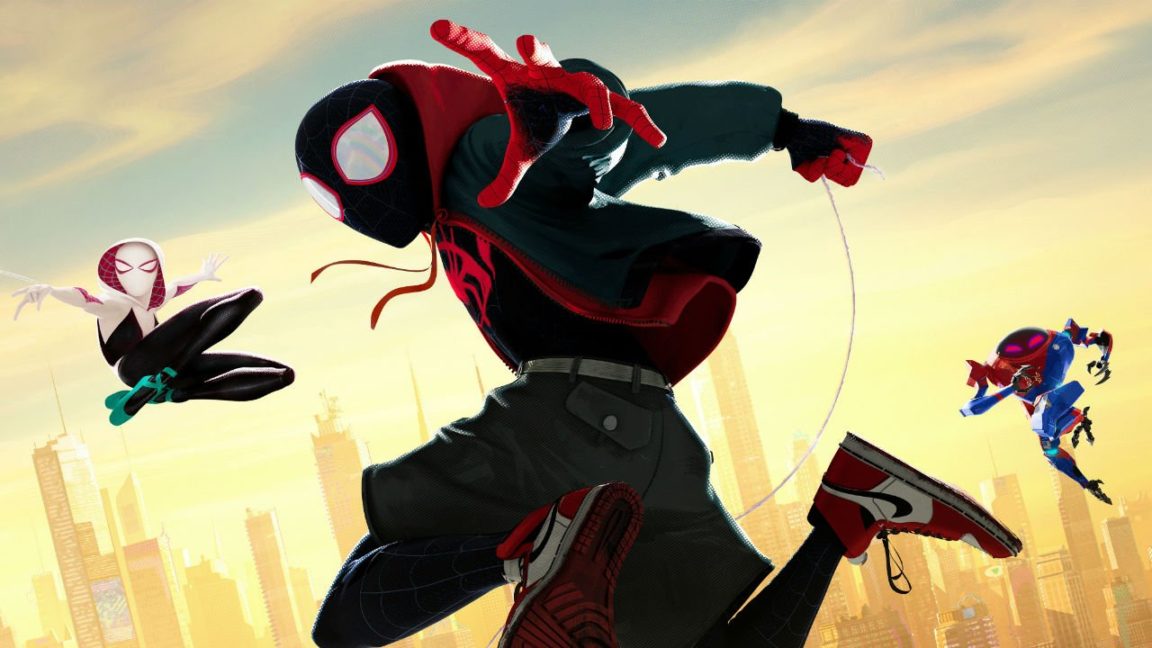While Marvel Studios is getting full use out Tom Holland’s Peter Parker in Homecoming and Infinity War, Sony is showing the world that it can still get on by. Venom may not have been the biggest hit with critics, but it yielded huge box office returns, especially overseas. And now with Spider-Man: Into the Spider-Verse, Sony has a real shot at both critical and financial success. Not only is it witty and self-aware, but it slings a web (pun very intended) tying the entire Spiderman franchise together!
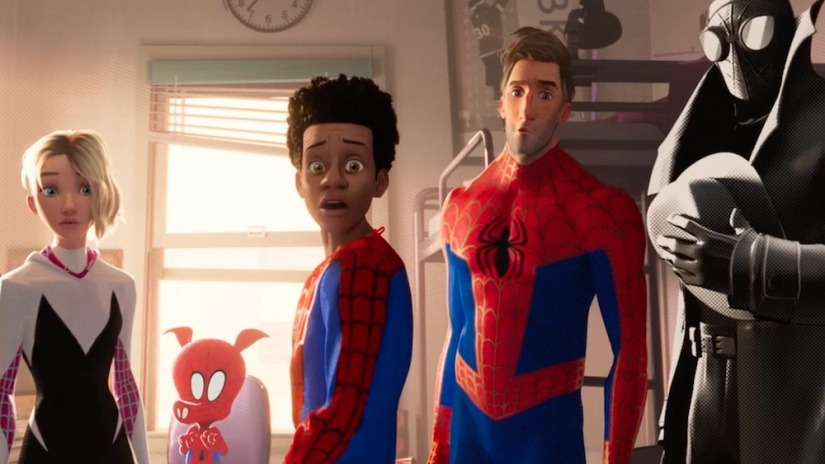
Not Your Typical Origin Story
The film opens in a world that’s already very accustomed to Spiderman, as the Peter Parker version has been active for 10 years. We are then introduced to the young and naïve Miles Morales (Shameik Moore). He’s brilliant, but unsure of himself, and doesn’t even feel like he fits in to his high end private school which he won a lottery to get into. Between that and his overbearing police officer father, Miles isn’t quite sure what his place is in the world. He looks up to his Uncle Aaron (Mahershala Ali), a free spirit and graffiti artist that his law abiding father looks down on.
Everything changes when Miles is bitten by the obligatory radioactive spider. He suddenly gains the classic superpowers and is overwhelmed by them. From there he discovers what it means to be a superhero. In a strange way, this is both on origin story for Miles but a Logan-esque story for Peter Parker (Jake Johnson), who’s far past his prime and glory days. This giant rip in the space time continuum brings them, along with many others, together to fight the villainous Kingpin (Liev Schreiber) and try to correct the hole in space-time.
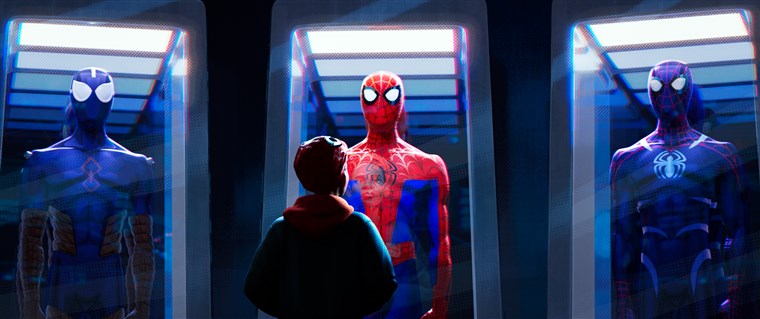
Something else which can’t go unmentioned is this films incredibly distinctive animation style. Between the text boxes which occasionally appear, and the over the top, larger than life portrayal of Kingpin, it looks very much like a comic book come to life. There are scenes where the characters in the foreground appear three dimensional, while the backgrounds appear merely two. It’s a truly compelling style that hasn’t really been attempted before. It only helps to reinforce the comic book roots of the character.
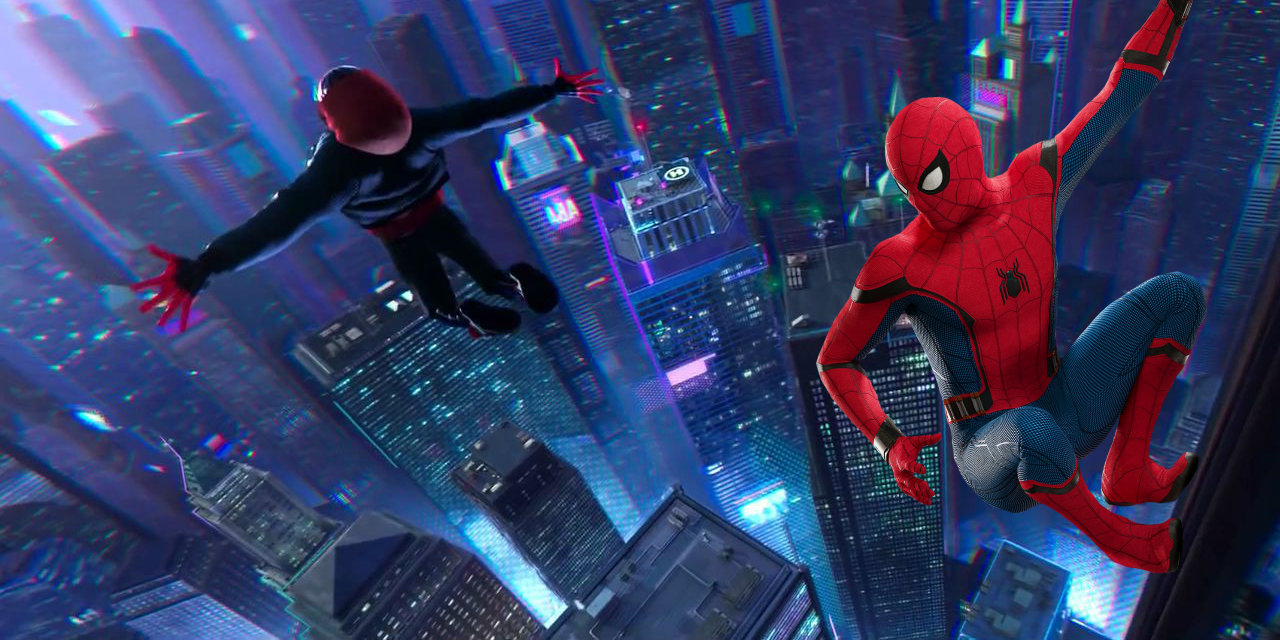
The Most Unique Cast of Characters
The depressed and middle-aged Peter Parker isn’t the only one who is ripped from his world. We also meet the rock band playing and edgy Spider-Gwen (Hailee Steinfeld), the dark and mysterious Spiderman Noir (Nicholas Cage), the fun and Japanese anime style Peni Parker (Kimiko Glenn), and the hilarious but formidable Spider-Ham (John Mulaney). They’re unique enough from each other to stand out, but mesh well enough to create a team that rivals the Avengers. They make for a great ensemble, and the best scenes of the film are when they’re working together.
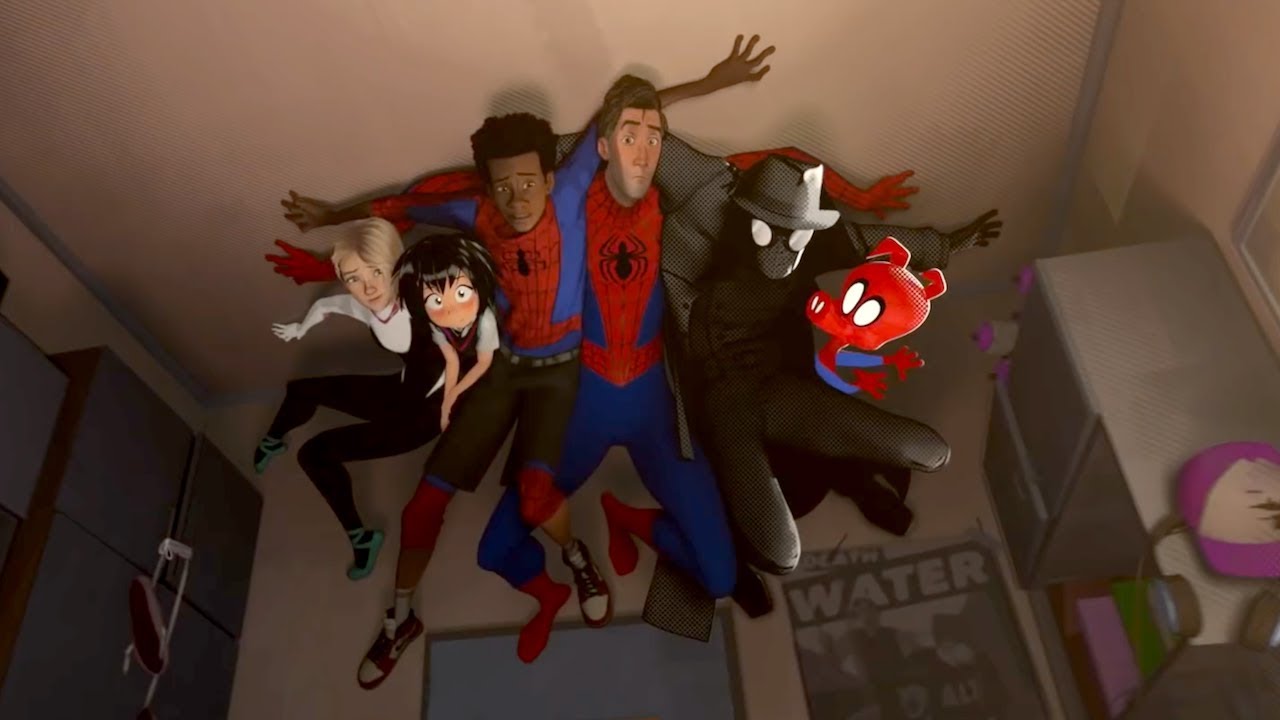
In addition Lily Tomlin voices the most badass version of Aunt May we’ve ever seen on film. Liev Schreiber was one of the only good parts of X-Men Origins: Wolverine, and he doesn’t disappoint here either. While most of the film had a great self-deprecating sense of humor (compliments of Lego Movie screenwriter Phil Lord), there did seem to be one huge missed opportunity in terms of casting.
Jake Johnson is a talented and hilarious actor, and while he does a great job as Peter Parker, it would have been all the more meta to cast Tobey Maguire so as to connect it back to the Sam Raimi trilogy (which is still referenced anyway). The same could be said for Mary Jane, who’s voiced well by Zoë Kravitz, but it would have been even cooler to have it be Kirsten Dunst. It doesn’t really take anything away by not having this, but it would have been a fun bonus.

The Implications of the Multiverse
Perhaps the greatest contribution Into the Spider-Verse makes (other than being incredibly entertaining) is the very idea of the multiverse. We meet several different version of Spiderman from other dimensions, but we can assume that there are countless more. Everything from the Sam Raimi trilogy, to Venom, to the MCU, to the Amazing Spiderman films, and even the cartoons are now connected! And not just that, but one could assume this multiverse covers every single Marvel property ever made as well. It doesn’t necessarily mean we’ll get crossovers of all of these, but it’s a fascinating idea to ponder.
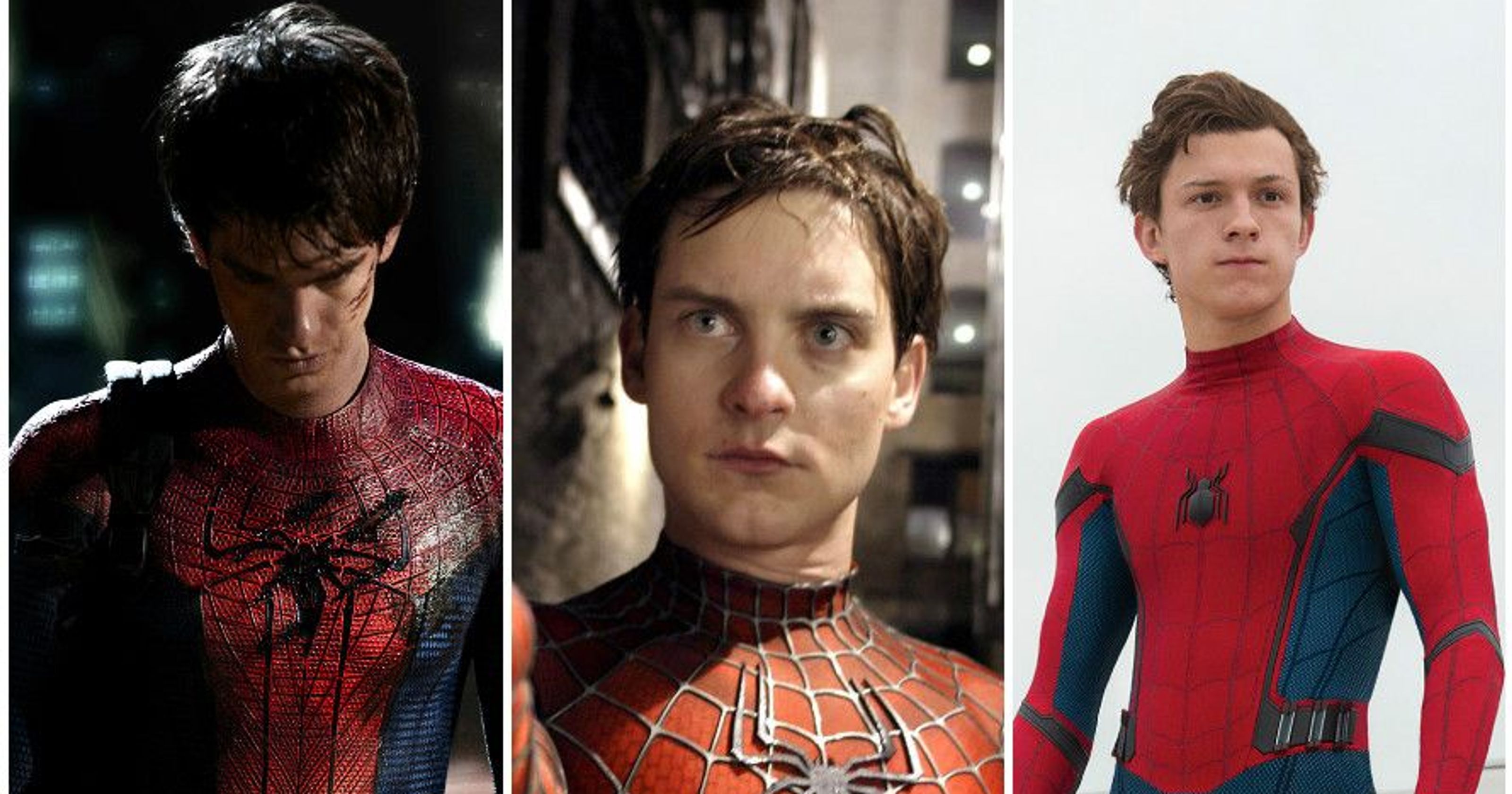
Sony is proving that they can still benefit from their Spiderman property while allowing Marvel Studios to use Tom Holland in their own universe. In a way, this a win-win for everyone. Because this was also an origin story for Miles, it means we could enjoy an entire new animated film series just based on his adventures. It seems that both Sony and Marvel have found a way to have their cakes and eat them too!


